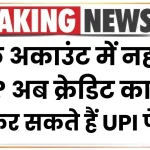
If you have taken a personal loan, then keep these things in mind before pre-closure to ensure a smooth, financially beneficial process. Many borrowers consider closing their loans early to save on interest—but rushing into pre-closure without understanding the process, rules, and costs involved can lead to surprises.
Pre-closure, also known as prepayment or foreclosure, means paying off your entire outstanding loan amount before the loan tenure ends. While it can reduce your debt burden and save on interest, it also comes with certain conditions and fees that vary from lender to lender. In this article, we break down everything you need to know about pre-closing a personal loan, including benefits, risks, rules, and step-by-step instructions.
Taken a Personal Loan, Then Keep These Things in Mind
| Feature | Details |
|---|---|
| What is Pre-Closure? | Paying off a personal loan in full before its scheduled end date |
| Minimum EMI requirement | Generally, 6 to 12 EMIs must be paid before pre-closure is allowed |
| Pre-Closure Charges | Typically 2%–5% of outstanding loan amount |
| Required Documents | ID proof, loan account details, closure request form, payment method |
| Benefits | Saves on interest, improves credit score, reduces monthly liabilities |
| Risks | Charges may outweigh savings, liquidity concerns |
Pre-closing a personal loan can be a smart financial move—but only if done right. Check your lender’s terms, calculate your savings, keep documentation ready, and ensure your credit report reflects the closure.
It’s all about striking the right balance between saving interest and maintaining financial flexibility. Don’t drain your emergency funds just to close a loan early. If you’re unsure, consider speaking to a financial advisor.
Why Pre-Close a Personal Loan?
A personal loan often comes with high interest rates—ranging from 10% to 25% per annum, depending on your credit score and lender. So, if your financial condition improves, you might want to close the loan early to save on interest and become debt-free sooner.
Let’s say you took a loan of ₹5 lakh at 14% interest for 5 years. If you repay it over 5 years, your total repayment could be around ₹7.02 lakh. But if you pre-close the loan in 2 years, you could save ₹1.30–₹1.40 lakh in interest.
However, it’s not just about saving interest. Pre-closing your loan can:
- Improve your credit score
- Reduce your financial stress
- Free up EMI capacity for future needs
see also: Start Investing in PPF Scheme with Just ₹500 and Get Tax-Free Returns
Before You Pre-Close: 6 Things to Keep in Mind
1. Check the Lock-In Period
Most banks or NBFCs don’t allow pre-closure in the first few months of your loan. You must typically pay at least 6–12 EMIs before you can apply for foreclosure.
Check your loan agreement or contact your lender’s customer care to confirm this.
2. Know the Pre-Closure Charges
Lenders often charge 2% to 5% of the outstanding principal if you pre-close. For instance, if your remaining loan amount is ₹2,00,000 and the charge is 4%, you’ll pay ₹8,000 extra.
Some lenders waive these charges for certain borrowers—especially if you’re on a fixed income or have a strong credit profile—so don’t hesitate to negotiate.
3. Ask for a Foreclosure Statement
Request a written foreclosure statement from your lender. This document will clearly show:
- Outstanding principal
- Accrued interest
- Applicable charges
- Total amount payable
Having this helps avoid surprises and ensures transparency.
4. Arrange the Right Documents
To pre-close a loan, you’ll need:
- Loan account number
- Government-issued ID (like PAN or Aadhaar)
- Pre-closure request form (available online or at the branch)
- Mode of payment (online transfer, cheque, or demand draft)
Pro Tip: Keep photocopies and receipts of everything.
5. Visit the Bank in Person (if required)
While some banks offer online pre-closure (like HDFC, Axis, and ICICI), many require a branch visit to complete the process. Confirm the mode of prepayment beforehand.
If you can’t go yourself, some banks allow a representative with an authorization letter and valid ID to do it for you.
6. Collect Closure Proof and Update Your Credit Report
Once you complete the pre-closure, collect:
- Loan Closure Letter
- No Objection Certificate (NOC)
- Zero Balance Confirmation
Then, check your credit report (via CIBIL, Experian, or CRIF) after 30 days to ensure your loan is marked as “Closed”. This will help your CIBIL score rise over time.
Benefits of Pre-Closing a Personal Loan
Save Money on Interest
You reduce the tenure, meaning less interest accrual. This can save tens of thousands depending on your loan size and interest rate.
Boost Your Credit Score
Lenders love borrowers who close debts early. It shows financial discipline and may increase your score by 30–50 points.
Mental Peace
Less debt equals less stress. You also free up EMI space for investing or handling emergencies.
Downsides of Pre-Closure
While the idea of being debt-free is attractive, keep these possible downsides in mind:
Liquidity Crunch
If you use up your entire savings to pre-close, you may struggle during emergencies. Always keep an emergency fund aside.
Charges May Offset Benefits
If your loan is nearing the end or your interest rate is already low, the prepayment penalty might be more than the savings on interest. In such cases, just continue EMIs.
No Tax Benefit
Unlike home loans, personal loans don’t offer Section 80C tax benefits (unless used for business or property renovation with documentation). So pre-closure won’t give any tax savings either.
How to Calculate if Pre-Closure is Worth It
Let’s take an example:
- Loan Amount: ₹4,00,000
- Interest Rate: 13%
- Tenure: 4 years
- Monthly EMI: ₹10,750
If you pre-close after 18 months:
- Remaining principal: ₹2.45 lakh
- Prepayment fee (4%): ₹9,800
- Interest saved over 30 EMIs: ₹46,000
Net gain = ₹36,200
Use a loan pre-closure calculator online to run these numbers before deciding.
Step-by-Step Guide to Pre-Close Your Loan
Step 1: Check your eligibility and lock-in period
Read your loan agreement or call customer care.
Step 2: Request a foreclosure quote
Ask your bank for a statement via email or branch visit.
Step 3: Prepare payment and documents
Arrange the total due and carry all necessary documents.
Step 4: Visit the bank or initiate online
Submit the payment and paperwork as instructed.
Step 5: Collect closure letters
Get your NOC, loan closure certificate, and payment receipt.
Step 6: Check credit report
Use platforms like CIBIL or Experian after 30–45 days.
see also:
Personal Loan FAQs
Q1. Can I pre-close my personal loan after 6 months?
Yes, most lenders allow it after 6–12 EMIs, but check your loan terms to confirm.
Q2. Will my credit score improve after pre-closing a personal loan?
Yes, especially if it was your only active loan. It reflects your creditworthiness positively.
Q3. Do I need to go to the bank to pre-close?
Not always. Some banks offer online prepayment, but many still require a branch visit.
Q4. Can I part-prepay instead of full closure?
Yes, part-prepayment helps reduce the principal and future EMIs. It’s a great option if you can’t pay the full amount.
Q5. Are there any tax benefits in pre-closing a personal loan?
No tax benefits are applicable unless the loan was used for business or property purposes (with proof).











